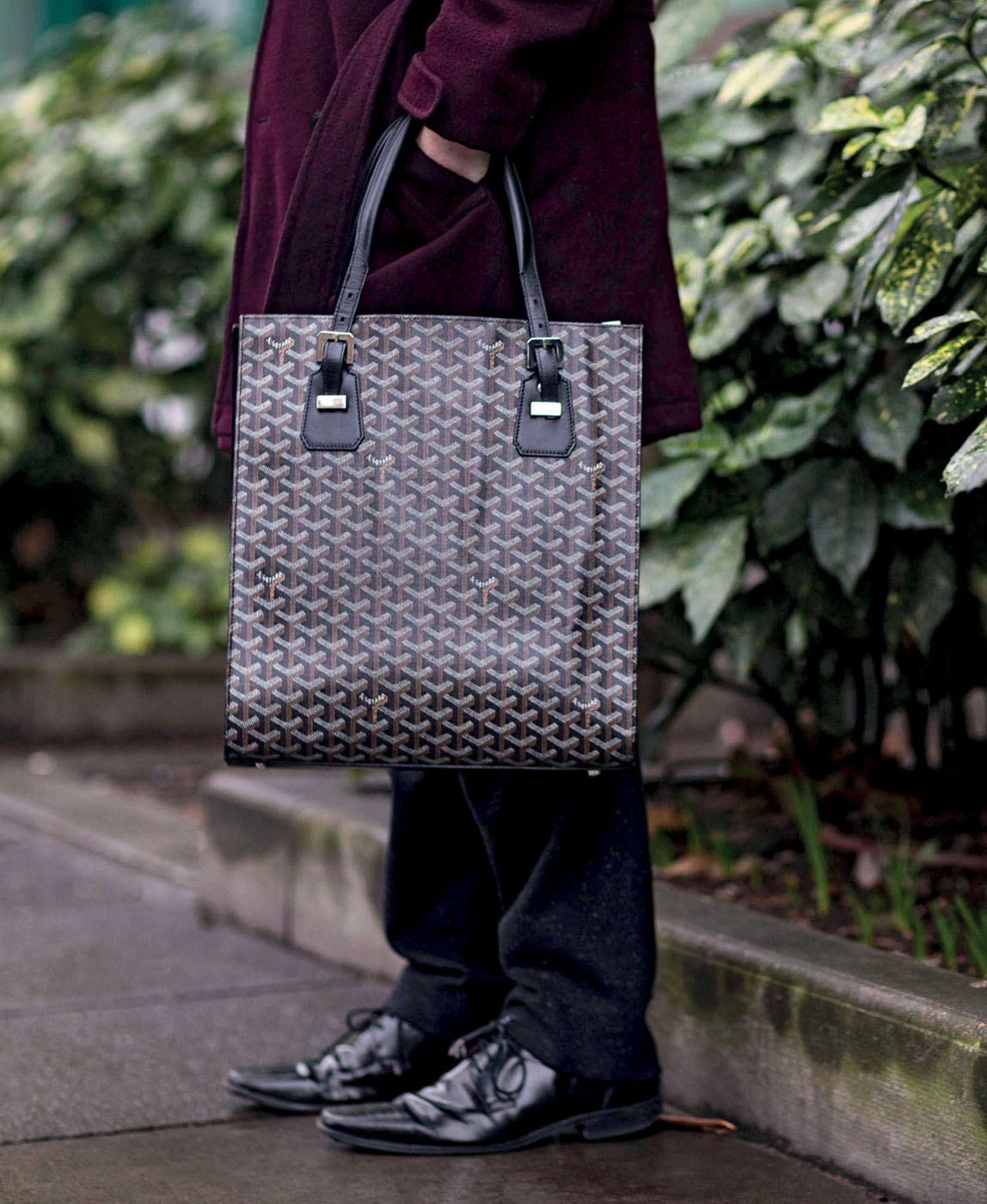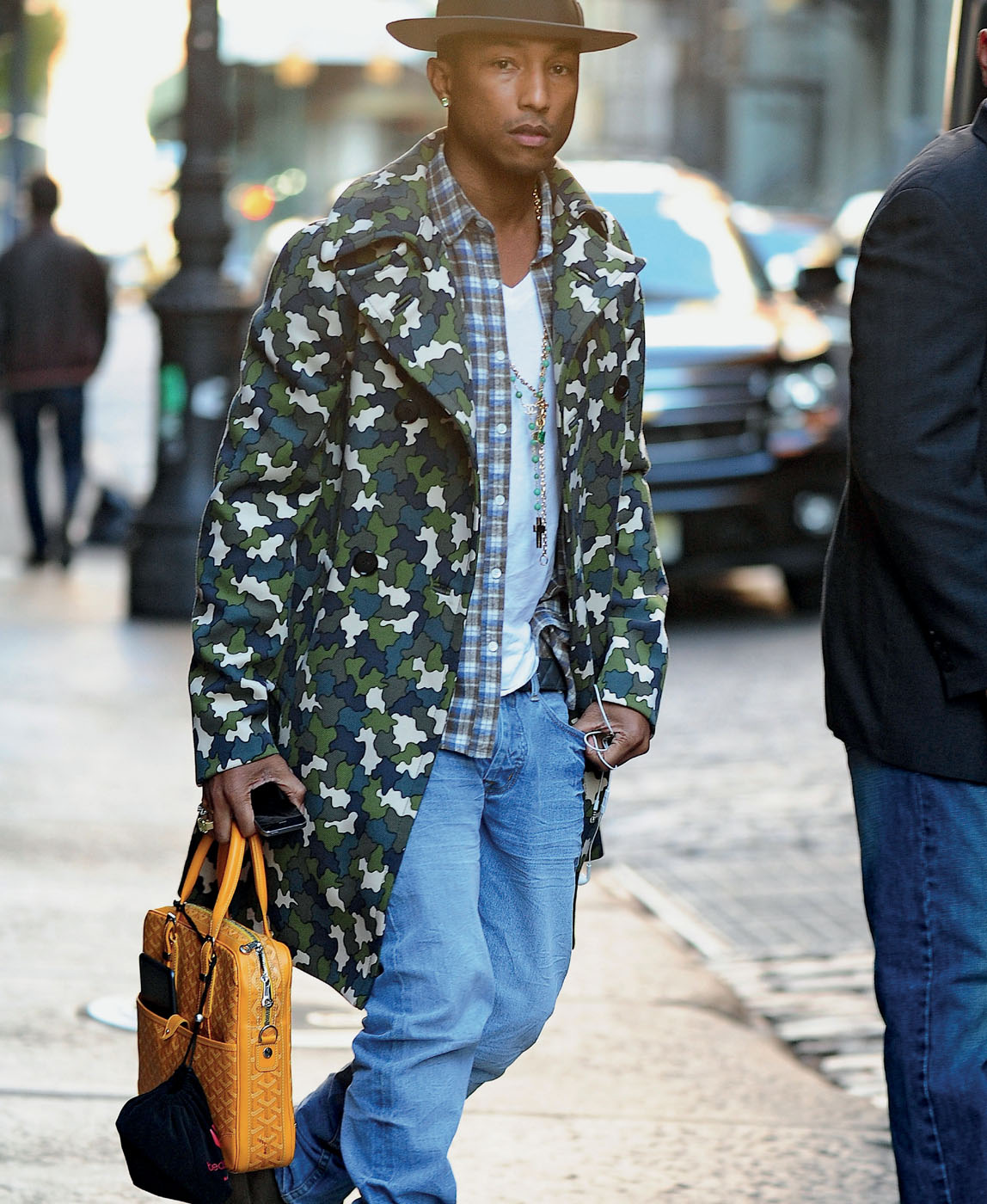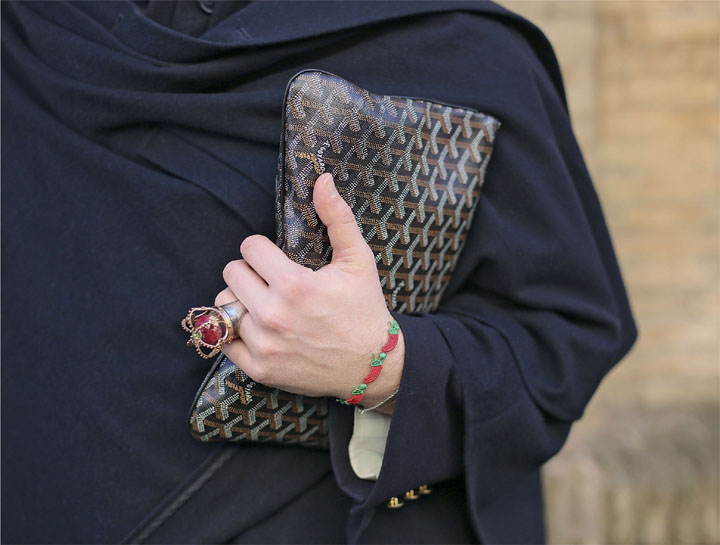ST. LOUIS, 1998

Comores bag, Goyard, London, January 2016.
Melodie Jeng/Getty Images
In 1792 trunkmaker Pierre-François Martin founded the House of Martin, and his fine handcrafted designs soon made him a favorite of the aristocracy, becoming a royal supplier to Marie-Caroline de Bourbon-Siciles, Duchess of Berry. Martin handed down the company to trusted employee Louis-Henri Morel, who successfully ran the business, renaming it Maison Morel, until his death in 1852, when he bequeathed it to his twenty-four-year-old apprentice François Goyard. In 1853 the Goyard era officially began.
In 1885 Goyard’s eldest son, Edmond, took the reins, opening stores in Biarritz, Bordeaux, and Monte Carlo; he’s the one who introduced Goyardine, the firm’s signature Y-pattern canvas cloth. The Y shape is composed of tiny dots meant to subtly reference his ancestors, log drivers in Burgundy. Through the years, the company descended from one Goyard generation to the next, garnering a luminous clientele: Catherine Deneuve, Barbara Hutton, Pablo Picasso, Cole Porter, the Rockefellers, and the Duke and Duchess of Windsor, among many others. Goyard was especially known for its custom creations, from a portable writing desk for Arthur Conan Doyle to a cheetah carrier for Josephine Baker.
By the 1990s, however, the firm had slumped and had only one shop, on the rue Saint-Honoré, and a single salesman. And it would have stayed that way if not for businessman Jean-Michel Signoles. He had been an avid Goyard collector since 1974, after falling in love with a trunk at a flea market in Port-de-Lanne. He became fanatical about the brand—“I bought all of its records, traced back its registered models, and got to know the dealers who sold Goyard items,” he told the International Herald Tribune in 2009—and began contacting its owners in the mid-1990s to sell. For Signoles, restoring a legendary French firm wasn’t such a stretch—he had modernized and revived the 1909 Hôtel de la Cité in his native Carcassonne. By 1998 he convinced the owners—fifth-generation Goyards—to sell and opened a new workshop in Carcassonne.
Signoles sparked a revival, introducing new shapes and colors, but never gave in to the brashness and bling that dominated the competition. It was luxury done with a wink and a whisper—to this day, there are no advertisements, no e-commerce—with the sole identifying factor being the discreet Y-shaped chevron pattern.
Soon, with women feeling logo-mania fatigue, the St. Louis was everywhere. From Paris to New York, you couldn’t turn a corner without seeing the tote, cut from a coated linen-cotton-hemp hybrid. “And the winner of the handbag classic is: Goyard by a mile!” exclaimed a 2006 New York Times feature by photographer Bill Cunningham, who dedicated an entire spread in his “On the Street” column to Goyard sightings.
Adding to the brand’s air of desirability was the ability to order a customized bag—a trunk for your saddle and polo equipment or a bag personalized with hand-painted initials, stripes, or your family coat of arms. It was, in fact, this anti–It Bag that gave birth to the monogramming trend followed by countless houses, including Dior, Prada, and Louis Vuitton.

Pharrell Williams carrying a Goyard Goyardine Ambassade bag, New York City, October 2013.
Alo Ceballos/FilmMagic/Getty Images
“She took a handbag—that is all. She will send for her trunk.”
—HORATIO ALGER, Adrift in New York, 1903

Senat pochette, Goyard, Rome, January 2014.
Ernesto Ruscio/Getty Images